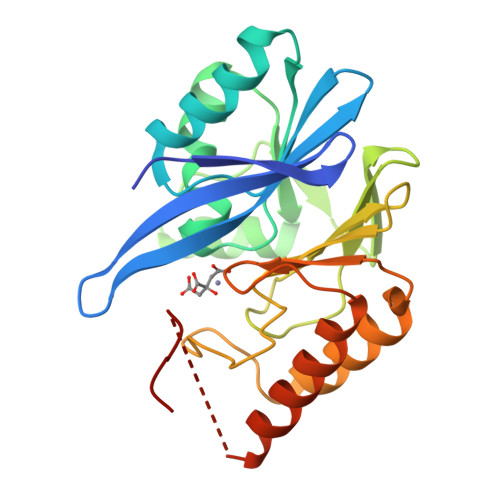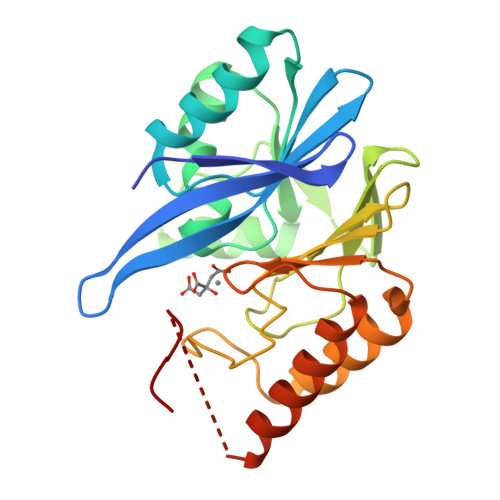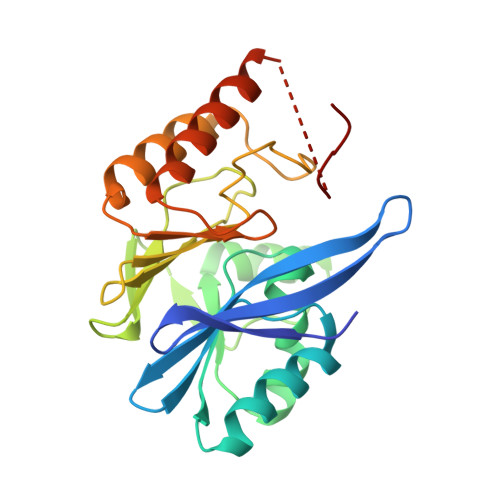Mutagenesis of zinc ligand residue Cys221 reveals plasticity in the IMP-1 metallo-beta-lactamase active site
Horton, L.B., Shanker, S., Mikulski, R., Brown, N.G., Phillips, K.J., Lykissa, E., Venkataram Prasad, B.V., Palzkill, T.(2012) Antimicrob Agents Chemother 56: 5667-5677
- PubMed: 22908171
- DOI: https://doi.org/10.1128/AAC.01276-12
- Primary Citation of Related Structures:
4F6H, 4F6Z - PubMed Abstract:
Metallo-β-lactamases catalyze the hydrolysis of a broad range of β-lactam antibiotics and are a concern for the spread of drug resistance. To analyze the determinants of enzyme structure and function, the sequence requirements for the subclass B1 IMP-1 β-lactamase zinc binding residue Cys221 were tested by saturation mutagenesis and evaluated for protein expression, as well as hydrolysis of β-lactam substrates. The results indicated that most substitutions at position 221 destabilized the enzyme. Only the enzymes containing C221D and C221G substitutions were expressed well in Escherichia coli and exhibited catalytic activity toward β-lactam antibiotics. Despite the lack of a metal-chelating group at position 221, the C221G enzyme exhibited high levels of catalytic activity in the presence of exogenous zinc. Molecular modeling suggests the glycine substitution is unique among substitutions in that the complete removal of the cysteine side chain allows space for a water molecule to replace the thiol and coordinate zinc at the Zn2 zinc binding site to restore function. Multiple methods were used to estimate the C221G Zn2 binding constant to be 17 to 43 μM. Studies of enzyme function in vivo in E. coli grown on minimal medium showed that both IMP-1 and the C221G mutant exhibited compromised activity when zinc availability was low. Finally, substitutions at residue 121, which is the IMP-1 equivalent of the subclass B3 zinc-chelating position, failed to rescue C221G function, suggesting the coordination schemes of subclasses B1 and B3 are not interchangeable.
Organizational Affiliation:
Departments of Molecular Virology and Microbiology, Baylor College of Medicine, Houston, Texas, USA.




















